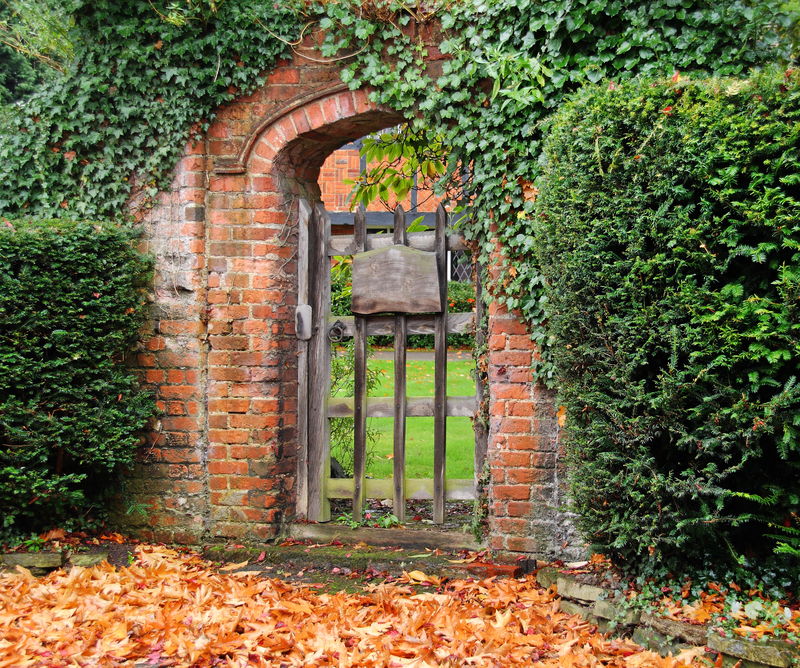Top-Rated Small Evergreen Trees to Beautify Your Garden
Creating a lush and inviting garden space is every homeowner's dream. One of the most effective ways to achieve year-round beauty, privacy, and structure is by introducing small evergreen trees. These remarkable plants maintain their vibrant foliage throughout the seasons, requiring minimal upkeep while offering maximum visual impact. If you are searching for the best small evergreen trees for your landscape, this guide presents a comprehensive selection, expert tips, and design ideas for every kind of garden.
Why Choose Small Evergreen Trees for Your Garden?
Evergreen trees are prized for their ability to retain foliage and color through all seasons. But why specifically choose small evergreen trees?
- Space Efficiency: Perfect for smaller yards, patios, and urban gardens.
- Low Maintenance: Require less pruning and care compared to larger species.
- Year-Round Appeal: Offer constant greenery, even in the depths of winter.
- Design Flexibility: Can be used as privacy screens, specimen plants, or in containers.
- Wildlife Benefits: Provide shelter and food for birds and beneficial insects.

The Benefits of Adding Small Evergreen Trees to Your Landscape
Incorporating small evergreens means more than just beauty. Here are some additional advantages:
- Improved Air Quality: Small evergreens help filter pollutants and release oxygen.
- Erosion Control: Their roots stabilize soil, reducing erosion risks.
- Noise Reduction: Dense foliage can serve as a natural sound barrier.
- Increased Property Value: A well-designed garden with evergreens can boost your home's curb appeal.
Choosing the Right Small Evergreen Tree: Factors to Consider
Not all small evergreen trees are created equal. To ensure your new trees thrive and amplify your landscape's charm, consider these aspects:
- Climate: Select species suited to your USDA hardiness zone.
- Soil Type: Some evergreens prefer sandy soils, while others do better in loam or clay.
- Sunlight: Identify how much daily light your intended planting area receives.
- Growth Rate and Final Size: Be aware of the mature height and width to prevent overcrowding.
- Shape and Texture: Shape (columnar, conical, rounded) and leaf texture should harmonize with your existing plants.
- Water Requirements: Especially important in drought-prone regions.
Top-Rated Small Evergreen Trees for Garden Beauty and Structure
Here is a diverse selection of the best small evergreen trees frequently recommended by horticulturists and landscape designers. Use these outstanding choices to add year-round interest and life to your garden:
1. Dwarf Alberta Spruce (Picea glauca 'Conica')
- Height: 6-8 feet (at maturity)
- Growth Habit: Dense, conical, slow-growing
- USDA Zones: 3-7
The Dwarf Alberta Spruce is a classic choice for compact spaces and formal gardens. Its lush, bright green needles and neat pyramid shape create a striking focal point. Ideal for planting in small gardens, as accent specimens, or even in containers by entranceways, this spruce is slow-growing and easy to care for. Just ensure adequate air circulation and avoid soggy soil.
2. Japanese Holly (Ilex crenata)
- Height: 6-10 feet
- Growth Habit: Rounded, dense branching
- USDA Zones: 5-8
Japanese holly offers lovely glossy, dark-green leaves resembling those of boxwoods. This tree's natural shape is perfect for low screens, hedges, or foundation plantings. Its female plants yield tiny black berries that add winter interest and attract birds. Japanese holly tolerates pruning well, allowing you to create topiary shapes or maintain it as a small, formal tree.
3. Italian Cypress (Cupressus sempervirens) 'Tiny Tower'
- Height: 8-12 feet
- Growth Habit: Columnar, tightly upright
- USDA Zones: 7-11
The 'Tiny Tower' Italian Cypress brings elegant vertical accent without overwhelming smaller landscapes. Its slender, columnar growth and evergreen foliage make it ideal for flanking entries, lining walkways, or as a living privacy screen. Drought-tolerant once established, this cypress also suits modern and Mediterranean garden designs beautifully.
4. Dwarf Southern Magnolia (Magnolia grandiflora 'Little Gem')
- Height: 8-15 feet
- Growth Habit: Upright, compact
- USDA Zones: 7-9
'Little Gem' Magnolia is a petite beauty with glossy evergreen foliage and stunning, fragrant white flowers in spring and summer. Its manageable size allows it to fit where full-sized magnolias won't. Expect continuous beauty from its rusty-brown leaf undersides, and occasional blooms even through late fall in mild climates. Requires full sun and well-drained soil.
5. Eastern Redcedar (Juniperus virginiana) 'Grey Owl'
- Height: 3-5 feet
- Growth Habit: Low, spreading
- USDA Zones: 2-9
If you desire unusual foliage and color, consider the 'Grey Owl' variety of Eastern Redcedar. It stays compact and a gentle silver-gray year-round, making it great for borders or ground cover. This tough little evergreen adapts to poor, dry soils and serves as attractive shelter for birds.
6. Boxwood (Buxus sempervirens)
- Height: 3-6 feet
- Growth Habit: Rounded, dense
- USDA Zones: 5-8
Boxwoods are celebrated for their vivid green leaves and adaptability to shaping and formal clipping. Use these small evergreen trees as garden borders, topiary spheres, or short hedges. Their tolerance for shade and low maintenance requirements make them a gardener's favorite.
7. Hinoki False Cypress (Chamaecyparis obtusa) 'Nana Gracilis'
- Height: 3-6 feet
- Growth Habit: Rounded, richly textured
- USDA Zones: 5-8
Hinoki Cypress 'Nana Gracilis' stands out for its unique, delicate foliage that's soft to the touch and graceful in appearance. Slow-growing and compact, it works well in Japanese-themed gardens, rockeries, and alongside ponds. Its intricate branching and deep green color add year-round elegance to your landscape.
8. Yew (Taxus baccata and cultivars)
- Height: 4-10 feet
- Growth Habit: Dense, upright or spreading, depending on cultivar
- USDA Zones: 5-7
Yews are versatile small evergreen trees recognized for their deep green needles and red berries (note: berries are toxic if consumed). These classics for hedges and topiaries thrive even in shady sites and are easy to prune to your desired shape or height. Yews provide excellent winter structure to your garden beds.
9. Mugo Pine (Pinus mugo)
- Height: 3-6 feet
- Growth Habit: Spreading, squat, bushy
- USDA Zones: 2-7
For a cheerful and hardy addition, Mugo Pine is tough to beat. Its bushy form and soft, long needles create a relaxed, northern look. Suitable for rock gardens, borders, or slopes, it tolerates wind, poor soils, and urban conditions. Minimal pruning is needed to keep its attractive shape.
10. Dwarf Blue Spruce (Picea pungens 'Glauca Globosa')
- Height: 2-5 feet
- Growth Habit: Rounded, very compact
- USDA Zones: 2-8
This slow-growing, globe-shaped spruce adds captivating blue-toned foliage to your landscape. The Dwarf Blue Spruce is perfect for adding color contrast in mixed beds or as a standalone specimen. Drought and cold tolerant, it requires little care once established.
Tips for Planting and Caring for Small Evergreen Trees
After selecting your favorite small evergreen varieties, proper planting and care will ensure a healthy, thriving landscape:
- Plant in Well-Drained Soil: Evergreens dislike "wet feet." Amend heavy clay soils as needed.
- Mulch Generously: Mulch helps retain moisture, regulate soil temperature, and suppress weeds.
- Water Consistently: New trees need regular watering until established--typically the first couple of years.
- Limit Fertilizer: Too much fertilizer can scorch roots. Use a slow-release, balanced fertilizer in early spring if needed.
- Prune Conservatively: Remove dead or damaged branches as needed. Heavier shaping is best done in late winter or early spring.
- Monitor for Pests: Common pests include spider mites, scale, or aphids--treat promptly if noticed.
Creative Uses for Small Evergreen Trees in Garden Design
Small evergreen trees are far more versatile than simply acting as backdrops. Try these creative design ideas:
- Container Gardens: Plant a dwarf evergreen in a decorative pot for patios, decks, or entryways.
- Focal Points: Use unique trees, like blue spruces or Hinoki cypress, as accents in perennial beds.
- Living Fences: Arrange multiple small evergreens as a privacy hedge or windbreak.
- Layered Planting: Position evergreens as mid-story plants between foundations and lower perennials.
- Winter Interest: Combine with red-twig dogwood or colorful winterberry for four-season displays.
- Zen and Rock Gardens: Pair slow-growing, textured evergreens with stones and gravel for a tranquil scene.

Frequently Asked Questions about Small Evergreen Trees
Which small evergreen tree is best for full shade?
Yews (Taxus species) and Japanese holly (Ilex crenata) are among the best evergreen trees for shady locations. They thrive where many other evergreens would struggle, still offering lush greenery and structure.
Can I grow small evergreen trees in containers?
Absolutely! Dwarf Alberta spruce, boxwood, and Hinoki cypress adapt well to pots. Be sure to use high-quality potting soil, provide drainage holes, and monitor water more frequently than for in-ground plantings.
Do small evergreen trees need much pruning?
Most small evergreen trees retain a tidy form naturally, requiring only occasional pruning to remove dead or diseased branches or, if desired, to maintain shape. Many respond well to shaping and can even be trained as topiaries or decorative standards.
How fast do dwarf evergreen trees grow?
Growth rates vary widely. Most true dwarf varieties are slow growers, adding only a few inches per year. Always check a specific tree's details before purchase if speedy screening is desired.
Are small evergreen trees deer resistant?
Many evergreens, such as boxwoods, Japanese holly, and some spruces, show resistance to deer browsing. However, local deer populations can vary in their tastes, so additional deterrents may sometimes be required.
Conclusion: Elevate Your Garden with Small Evergreen Trees
Small evergreen trees are a versatile, low-maintenance way to transform your garden into a year-round oasis. With an abundance of shapes, textures, and colors now available, choosing the right varieties allows you to enjoy privacy, wildlife visits, and constant greenery--without overwhelming your space. By following the tips and recommendations provided in this article, you are well on your way to creating a landscape that is both beautiful and easy to manage for years to come. Embrace these top-rated small evergreens and watch your garden come alive in every season!